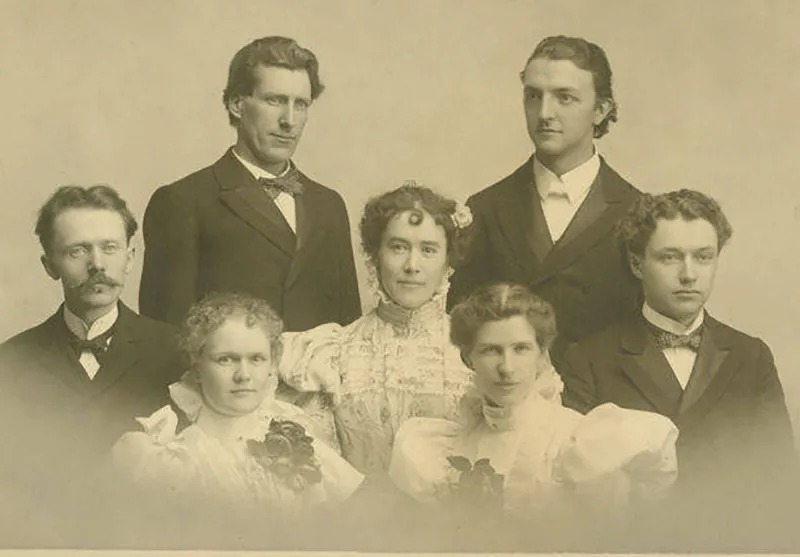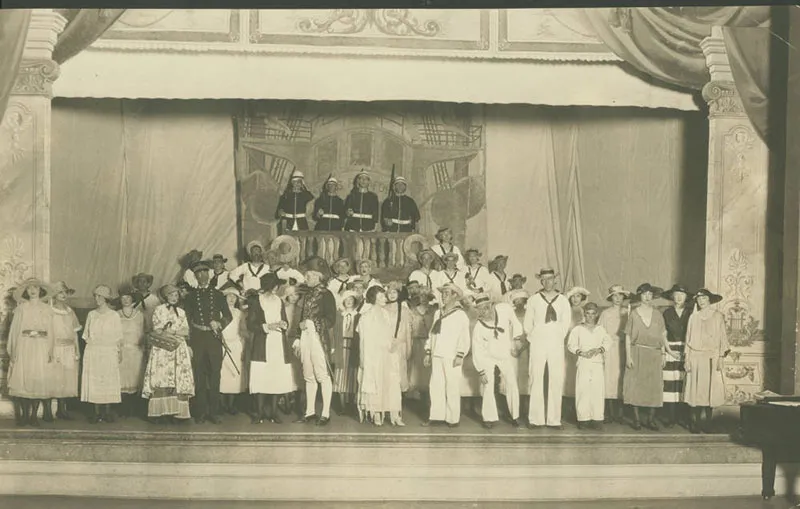You might say that Ithaca College began with a letter from Berlin. Ithaca-area native William Grant Egbert was a young, homesick violinist studying in Europe when it occurred to him that the best way to live at home and still make a living would be to do what he did best. He could play his violin, and do it in Ithaca, if he taught music on a grander scale. So he wrote a letter to an Ithaca friend, instructing him to sell $50 shares in a new conservatory of music. There weren't many takers.
Ithaca College Is Born
A Letter from Berlin
Early Years
Nevertheless, on September 19, 1892, the first students trooped into four rented rooms in a house on East Seneca Street to begin their lessons. On that first evening, the faculty of the Ithaca Conservatory of Music gave a free concert in the Unitarian Church, the beginning of a tradition of public performances. Conservatory officers busily set about finding boarding—"places carefully selected among Christian families"—for their new students, who studied everything from solfeggio and composition to guitar, mandolin, and even china painting.

The first faculty members of the Ithaca Conservatory of Music, 1892. William Grant Egbert is on the far right.
For years the fledgling Ithaca Conservatory of Music rented space in the old Wilgus Opera House above Rothschild's Department Store, where Center Ithaca stands today. But by 1910 the management of the school longed for permanent quarters. On November 1, 1910, the directors authorized taking out a mortgage of $11,400 to purchase Judge Douglass Boardman's handsome Italianate townhouse at 120 East Buffalo Street, adjoining DeWitt Park.
More Than Music
The Ithaca Conservatory of Music quickly became more than just a music school. By 1897 George C. Williams had arrived to inaugurate courses in elocution and rhetoric. Williams was an irrepressible character who turned his aspirations for the pulpit into a love of the stage, and here was born the College's long-standing theater arts program, with Williams in the leading roles in everything from Shakespeare to Gilbert and Sullivan.
As Williams succeeded Egbert to the presidency in 1924, he had more on his mind than music: he also had a head for business. Under Williams, faculty salaries were simply a commission on the number of students each professor taught, with bonuses for any newly recruited students.

A cast photo from "HMS Pinafore," presented in January of 1923 at the Little Theatre.
New schools began to cluster around the conservatory during these first several decades. Other schools included:
- Williams's School of Expression and Dramatic Art, 1897
- Institute of Public School Music, 1910
- Ithaca School of Physical Education, 1917
- Frederick Martin's Institute of Speech Correction, 1921
- Patrick Conway's Military Band School, 1922
- Edward Amherst Ott's School of Chautauqua and Lyceum Arts, 1922 (just in time to be made obsolete by the moving-picture craze)
- Andreas Dippel's School of Grand and Light, 1925
- Westminster Choir School, 1929-1932
We acted our hearts out, made music in the park, filled the church choirs with wonderful voices, and generally added life to the culture in Ithaca.